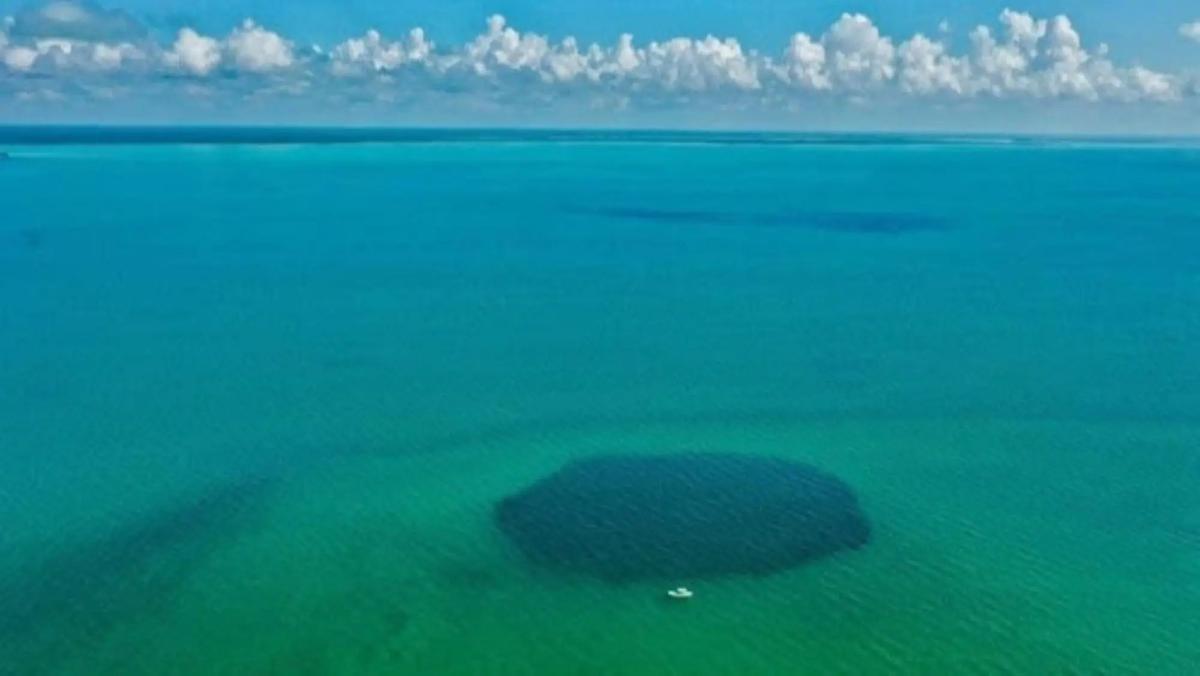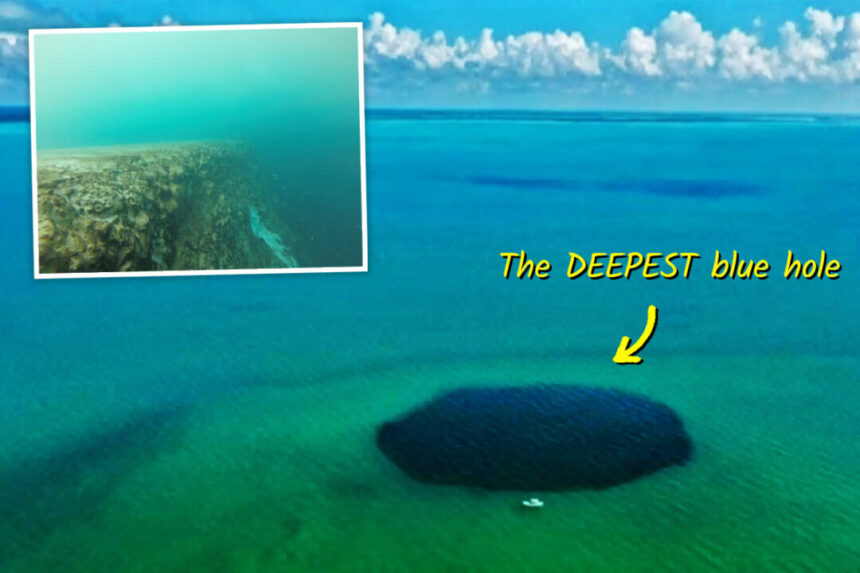A recent expedition has discovered what is believed to be the deepest-known under-ocean sinkhole on Earth. Named the “Taam Ja’ Blue Hole” (TJBH), this vertical marine cavern in Chetumal Bay, off Mexico’s Yucatan Peninsula, has been explored extensively by researchers. The TJBH has been measured to extend at least 420 meters below sea level, surpassing the heights of iconic structures like the Trump Tower in Chicago and the Eiffel Tower in Paris.

According to a study published in Frontiers in Marine Science, the TJBH is considered the deepest blue hole discovered so far based on recent oceanographic measurements. Researchers speculate that the hole may contain an intricate network of caves and tunnels, potentially harboring undiscovered biodiversity.
Originally identified by local fishermen in 2021, the TJBH has only recently been explored further by oceanographers using advanced equipment to gather precise data. Dive experts caution that marine sinkholes like TJBH can be hazardous due to the presence of hydrogen sulfide gas, requiring specialized diving skills and equipment.

During the latest expedition to TJBH, researchers used a CTD probe to measure the hole’s depth, reaching 1,380 feet before encountering an obstacle. Future research trips aim to provide a more accurate depth measurement.

Named after the Mayan term for “deep water,” the Taam Ja’ sinkhole is currently the deepest known underwater cavern. It surpasses other famous blue holes like the Sansha Yongle Blue Hole, Dean’s Blue Hole, Dahab Blue Hole, and the Great Blue Hole in terms of depth.





